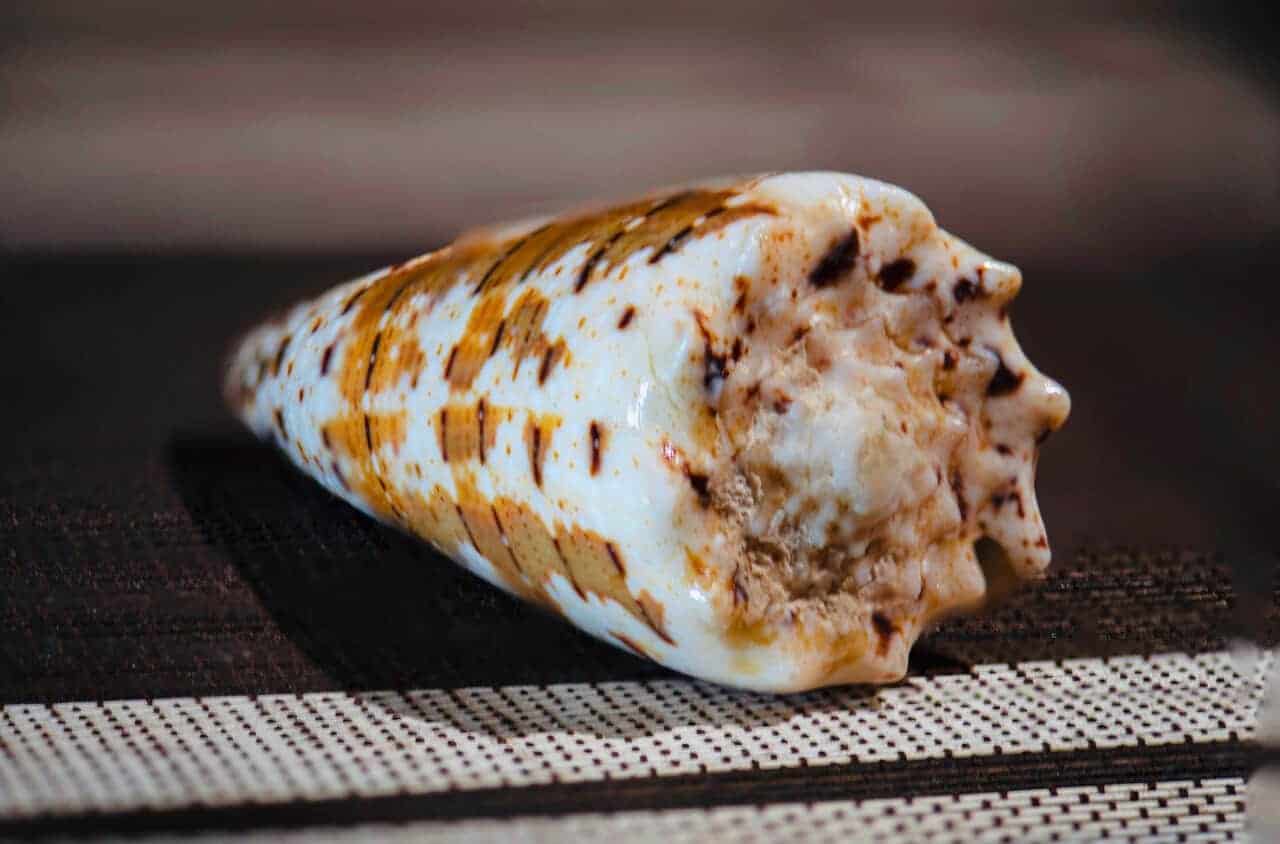
Cone snails aren’t glamorous. They don’t have svelte waistlines or jaw-dropping good looks. Yet, some of these worm-hunting gastropods are the femme fatales or lady killers of the undersea world, according to a new study conducted by an international team of researchers, including University of Utah Health scientists.
The researchers say the snails use a previously undetected set of small molecules that mimic the effects of worm pheromones to drive marine worms into a sexual frenzy, making it easier to lure them out of their hiding places so the snails can gobble them up.
“In essence, these cone snails have found a way to turn the natural sex drive of their prey into a lethal weapon,” says Eric W. Schmidt, Ph.D., the study’s senior author and a professor of medicinal chemistry at U of U Health. “What’s exciting about this finding is that they are doing it using an interesting set of small molecules that could one day inspire the development of new types of medications to alleviate pain and other conditions.”
The study appears in Science Advances.
Cone snails use a harpoon-like tooth at the end of their proboscis to inject venom into prey, instantly paralyzing them. Then, they slowly reel the immobilized animal into their mouths. For decades, scientists have been fascinated by this process. In particular, they’re intrigued by the chemical makeup of various venoms the snails use to disable prey and are exploring ways to reconfigure these substances into useful human medications.
Most scientists have focused their research on cone snails that hunt fish. The venoms from these gastropods are mainly composed of tiny protein segments called peptides. These peptides can be used to develop drugs, However, because of their structural composition, they can only be used as injectable drugs and can’t be taken orally.
In this new research, Schmidt and colleagues turned their attention to C. imperialis, a species of cone snail that primarily hunts Platynereis dumerili, more commonly known as a fire worm. The research team discovered that C. imperialis, or imperial cone, produces small chemicals that powerfully mimic the pheromones that trigger sexual activity in fire worms. The discovery of small molecules in the imperial cone could broaden the snail’s usefulness in medical research since about 80 percent of drugs are derived from small molecules.
In laboratory experiments, one of these chemicals—called conazolium A—sparked mating behavior in female worms, causing them to swim in tight, tail-chasing circles before they released their eggs. Genuanine, a chemical akin to uric acid, had a similar effect on male fire worms, prompting them to eject their sperm.
The researchers aren’t quite sure how this approach works in the wild, but they suspect that it could be a two-step process: First, the imperial cone exposes the fire worm to its fake sex pheromones, making it is easier to coax the worm out of its hiding spot (usually a coral reef). Then, like other cone snails, it harpoons the worm with a peptide-based venom to disable it.
But there’s a catch: mature worms are only sexually active for a short time that coincides with a full moon.
“If you expose the worms when they are either immature or not sexually active, the mimic pheromones don’t have any effect,” says Joshua Torres, Ph.D., lead author of the study and a former U of U Health graduate student. “The snails have to use other hunting techniques in these incidences.”
In fact, in their laboratory experiments, the researchers needed to use artificial moon light to induce sexual responses among the worms to cone snail pheromones. As a result, the researchers caution that how cone snails actually hunt in the wild and how these compounds fit into that quest remains largely unknown.
Moving forward, Schmidt and Torres are intrigued by the potential of using the small molecules produced by the imperial cone snail to lure worms out of hiding as a starting point for the development of new drugs.
This study, “Small-molecule Mimicry Hunting Strategy in the Imperial Cone Snail, Conus Imperialis,” appears in Science Advances. In addition to Drs. Schmidt and Torres, University of Utah scientists Zhenjian Lin, Maren Watkins, Paula Florez Salcedo, Robert P. Baskin, Shireen Elhabian, Helena Safavi-Hemami, Dylan Taylor, Jortan Tun, Noel Saguil, Yixin Fang, and Bladomero M. Olivera contributed to this research. Other researchers involved in this study include those representing the University of Copenhagen, University of the Philippines, University of Hawaii, the University of Wollongong, and the Marine Biology Laboratory at Woods Hole, Massachusetts. The National Institutes of Health supported this study.
from ScienceBlog.com https://ift.tt/3fHJ1Bh
No comments:
Post a Comment